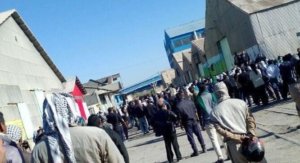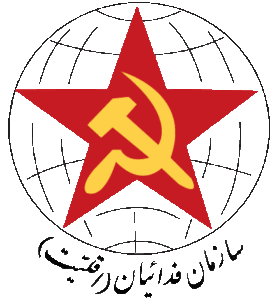An assessment of the Iranian labour Movement in 2017 and its Characteristics
 In 2017, we witnessed an increase in labour protests and strikes, qualitatively and quantitatively. In brief, we observed a rise in the working class movement.
In 2017, we witnessed an increase in labour protests and strikes, qualitatively and quantitatively. In brief, we observed a rise in the working class movement.
To the same extent, summons, arrests, trials, imprisonment and the expulsion of leaders of workers and strike organizers were increased. Hundreds of workers were prosecuted by judicial and security organisations for organizing strikes and protests and participating in campaigns.
The suppression started with the arrests of six workers of Kermanshah Oil Refinery in March. Haft Tapeh Sugar Cane Agro-industry workers and unionists were frequently arrested, and interrogated throughout the year. The arrest of 10 workers in Ahvaz steel factory, summoning 20 Hepco workers, andfour workers of a cement factory in Masjed Soleiman; sacking seven workers from Yasuj sugar factory, 11 workers of the telecommunications company in Lorestan, two workers in electric metre manufacturing company, 15 workers in Khuzestan’s steel factory, 14 workers of Modiran Khodro auto industry and tens of other leaders of the labour movement in petrochemical industries, mines, telecommunications company and many other factories are just a few instances of the ruling class’ measures against the working class.
The Islamic regime’s thugs beat workers and responded their protests by naked force. They attacked workers with teargas and tried to assassinate unionists and leaders by employing organised armed gangs.
The regime continued its neoliberal policies in this year. Privatisation, expelling workers, enforcing temporary work contracts, denying insurance and social security to workers, legislating new laws against the labour force, declining health and safety in workplaces were intensified. Unsafe workplace and an explosion in Zemestan Yurt mine left 43 workers dead. The government enforced an apprenticeship plan, which means nothing but the slavery of university graduates and providing free labour force for capitalists.
Despite the suppression, labour protests in the form of strikes, rallies, demonstrations and marches continued, and not all can be even listed here. The protests were seen in all sectors; oil, gas, petrochemicals, steel, metal, mines, tile making, cement, pulp and paper, vegetable oil and textile industries, ship building, agro-industries, utilities, telecommunications transportations, railway, water treatment and civic services. Families of the workers extensively engaged in the protests. Pensioners of factories and retired government employees also staged rallies. Workers in two industries – agricultural insurance funds workers and Persian Gulf Transportation Company – organised protests across the country.
Only in the second half of 2017, hundreds of workers of agricultural insurance funds, on behalf of 5,800 workers all over Iran, staged a rally outside of the parliament and the Agriculture Bank and other state organisations. Hundreds of Persian Gulf Transportation Company workers gathered outside of the company’s head-office, the Ministry of Economy and the Labour Ministry.
The sense of unity and solidarity among workers crossed the boundaries between factories and sectors. Workers in Haft Tapeh and Tehran bus drivers supported Hepco workers in Arak. Other workers in the country unanimously condemned attack on Hepco and Azarab workers. Furthermore, Haft Tapeh, Tehran bus driver and a large number of minders rushed to help the miners who were trapped beneath the earth in Zemestan Yurt mine, and expressed sympathy with them.
Haft Tapeh trade union and the bus drivers’ trade union published a joint statement on the minimum wage in 2018 and played a remarkable role in raising the workers’ demands at a national level. These two unions started a close collaboration on cyberspace.
The other characteristic of the movement in 2017 was the higher weight of political slogans and demands in it. In some factories and institutions, like Hepco, workers engaged in a direct confrontation with the government. These workers revealed the links between state agencies like the police and the Judiciary, on the one hand, and capitalists, on the other hand. They organised a campaign against privatisation. The workers’ struggle for the freedom of imprisoned workers, like Reza Shahabi, was another evidence of workers’ political demands. In some factories, workers put forward the idea of controlling and managing the workplace.
The participation of women workers in struggles was another characteristic of the labour movement in 2017. In Haft Tapeh, apart from the striking workers’ wives, female workers played an active role in the strike.
More signs of the merge of the working class’ movements with protests of masses were seen. Unions of Haft Tapeh and bus drivers issued a joint statement in support of the January mass protests and condemned the government’s use of force against street protesters. A group of Haft Tapeh workers even went further and called for a street demonstration with under the slogan of “bread, work, freedom”. The other sign of this development was the use of universal slogans both in the labour movement in workplaces and mass protests in the streets.
The working class movement, in spite of its shortcomings and weaknesses, took long strides forward in 2017 and entered a new phase of its struggle. With such experience, the working class movement will surely take stronger steps in 2018.


